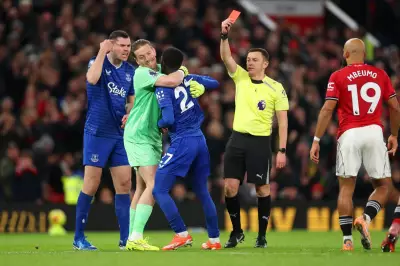
In a major shake-up for international football, England have discovered they will be kept apart from arch-rivals France until the final of the 2026 FIFA World Cup, thanks to newly introduced seeding regulations.
New Seeding System Explained
FIFA has confirmed that for the first time in World Cup history, the top four seeded teams will be formally paired and placed into opposite halves of the knockout bracket. This strategic move ensures that the highest-ranked nations cannot face each other until the tournament's latter stages. England, officially ranked as the fourth seed for the competition, have been paired with France, meaning a rematch of their thrilling 2022 quarter-final in Qatar – which Les Bleus edged 2-1 – is now impossible before the showpiece event in North America.
The draw itself is scheduled for Friday, December 5 at 5pm GMT and will be held at the Kennedy Center in Washington. Alongside England and France, other top seeds include Euro 2024 winners Spain and reigning world champions Argentina, who have also been linked and will occupy opposite sides of the draw.
What This Means for England's Path
This new ruling dramatically alters the potential path to glory for Gareth Southgate's squad. England's only possible meeting with France would be in the final, provided both teams win their respective groups and progress as expected through the knockout rounds.
Furthermore, the pairing system extends to other top teams. England, as the fourth seed, also cannot face Spain until at least the semi-finals. This creates a more predictable and potentially favourable route through the tournament for the Three Lions, avoiding the two European powerhouses until the very end.
World Cup Draw Pots and Procedures
The full composition of the draw pots has been revealed by FIFA. England reside in the prestigious Pot 1, alongside Spain, Argentina, France, Germany, Portugal, Brazil, Belgium, and the Netherlands. They are joined by the three host nations: the United States, Mexico, and Canada.
The three co-hosts have been granted fixed group positions – A1, B1, and D1 – guaranteeing they play all their group stage matches on home soil. A computer system will then ensure that paired teams, like England and France, are placed into opposite halves of the knockout bracket during the draw.
Here is a breakdown of the other pots:
Pot 2: Croatia, Uruguay, Japan, Switzerland, Iran, Senegal, South Korea, Ecuador, Austria, Australia, Colombia, Morocco.
Pot 3: Scotland, Norway, Egypt, Algeria, Tunisia, Paraguay, Ivory Coast, Uzbekistan, Qatar, Saudi Arabia, Panama.
Pot 4: Jordan, Cape Verde, Curacao, Haiti, New Zealand, South Africa, plus the winners of six inter-confederation and European play-off paths, which could include Wales, Northern Ireland, the Republic of Ireland, and Italy.
FIFA has confirmed that standard confederation restrictions will apply, meaning no more than one nation from each confederation (except UEFA, which can have two) can be drawn in the same group. This new seeding strategy promises to make the 2026 World Cup draw one of the most anticipated in recent memory.





